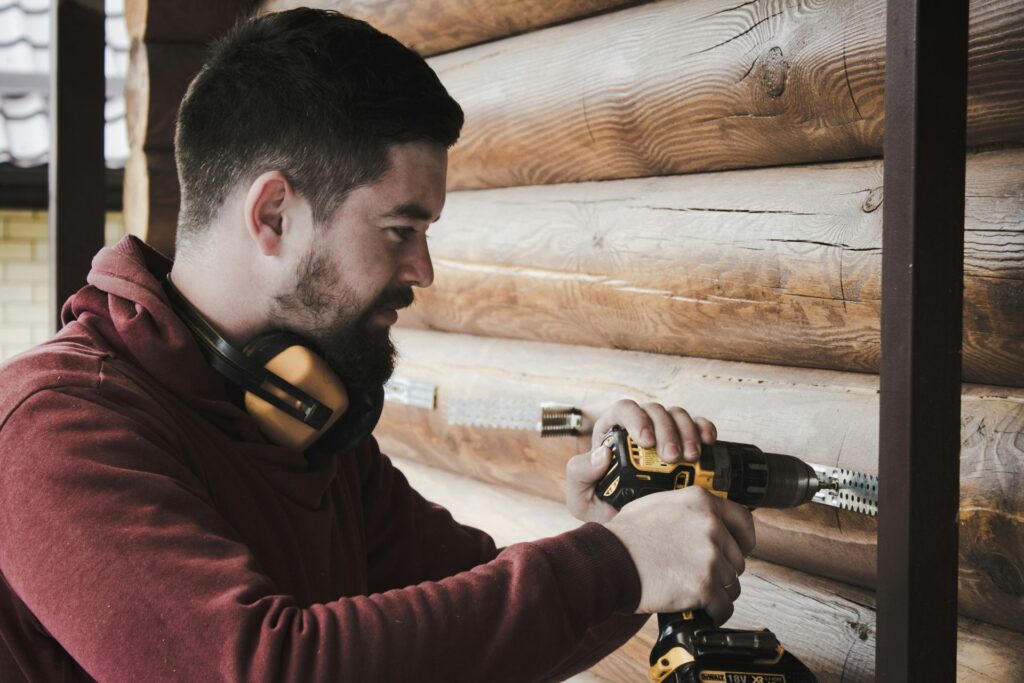
We are reader-supported. When you buy through links on our site, we may earn an affiliate commission.
The construction industry as a whole may be one of the biggest players in the global economy, but it’s also one of the most dangerous industries to work in. In 2019, there were 1,102 fatalities in the construction industry — 41.1% more than in 2011, when data collection began. Wearing the correct personal protection equipment (PPE) can’t prevent all of these tragedies, but it can help keep people safe on the work site and reduce the likelihood of potential injuries. Keep reading to learn about some basic PPE that you might encounter on a typical construction site.
1. Appropriate Clothing
The first layer of PPE for construction always comes in the form of wearing appropriate clothing for the task at hand. This includes:
- Long pants
- Shirts with sleeves
- Boots or closed-toed work shoes
Wearing inappropriate clothing puts the employee at risk. This includes things like sleeveless shirts and sneakers, which might work fine for other outdoor tasks, but are not appropriate for work on a construction site.
2. Hand Protection
Next is hand protection, usually in the form of gloves. The precise pair you choose will depend on the task at hand. Thin fabric gloves can help keep hands clean and provide a better grip if they’re coated with a substance like PVC or nitrile. They may also be coated with latex, which it may be wise to avoid because of allergy concerns.
Leather gloves are tougher and can help protect against abrasions and injury. Kevlar gloves will have the highest impact resistance and aluminized gloves will offer the highest heat resistance. The important thing is to choose the right pair of gloves for the job.
3. Hearing Protection
Construction sites are inherently noisy places. On average, the noise on a construction site will usually sit between 80 and 90 decibels with some tasks and equipment exceeding that. This isn’t immediately dangerous, but exposure to these loud noises over long periods can cause long-term hearing damage.
The necessary construction PPE for this risk consists of hearing protection — either earplugs or over-ear protection that can reduce the ambient noise without interfering with the worker’s ability to hear what’s going on around them.
4. Eye Protection
The human eye is incredibly delicate. It doesn’t take much — a small piece of shrapnel or a flying fragment of debris — to cause permanent damage and vision loss. Eye protection like safety glasses, goggles, or full face masks, depending on the tasks, can help to keep debris out of the eyes and prevent severe and often debilitating injuries.
5. High-Visibility Clothing
High-visibility clothing or outerwear is essential, whether the job site is experiencing traffic or not. High-vis clothing makes it easier for everyone — from other employees to drivers and equipment operators — to see an employee on the job site.
6. Respirators
There are any number of substances on the average construction site that can damage the lungs and cause breathing problems. Respirable silica, created by grinding or crushing concrete, can cause a condition known as silicosis when it builds up within the cilia of the lungs. Respirators may not be necessary for every task, but when there are risk factors or the air quality is poor, they should be a requirement.
7. Fall Protection
Falls are among the most common causes of on-the-job fatalities in the construction industry. They happen so often that they’re part of OSHA’s Fatal Four. Fall arrest equipment is only necessary for anyone working above the ground, but since a fall of as little as six feet can be fatal, anyone who doesn’t have both feet on terra firma needs to be equipped with fall arrest equipment.
8. Chemical Protection
Caustic chemicals can cause a variety of injuries if mishandled, but they are often a necessary part of the construction process. Non-reactive PPE is necessary to prevent exposure that could cause chemical burns or other injuries.
9. Task-Specific PPE
This is not an exhaustive list of construction PPE by any means. There’s a number of tasks on a construction site that may require specific PPE, such as welding masks and gloves for welders, or non-conductive equipment for electrical work if the circuits are live.
Note: Ensure PPE Fits Properly
One important thing to note is that no matter what type of PPE you’re using, it’s essential that it fits properly. Improperly fitted PPE cannot do its job and will leave the wearer vulnerable to injury.
Looking Forward
Personal protective equipment is a necessary part of any functional construction site. Ensure everyone has properly fitted PPE for each task at hand. Anything used frequently should be inspected and repaired or replaced.










